Windows Phone 8.1 Review
by Anand Lal Shimpi on April 14, 2014 10:00 PM EST- Posted in
- Smartphones
- Microsoft
- Mobile
- windows phone
- Windows Phone 8.1
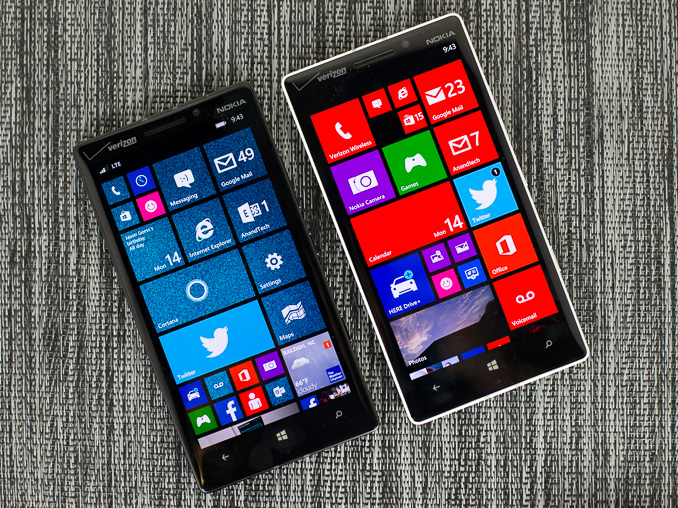
I was an early fan of Windows Phone 7. I remember completely switching over to the platform for about a month back in 2010, and being relatively happy. It wasn’t until I needed tethering support (which didn’t exist in the first release of WP7) that I had to move away. Unfortunately, Microsoft’s software and hardware update cadence for Windows Phone couldn’t pull me back.
In its first three years of existence, Windows Phone received roughly the same number of major updates as Android and iOS. From 2010 - 2013, Google took Android from Gingerbread to KitKat, Apple revved iOS from version 4 to 7, and Microsoft gave us Windows Phone 7, 7.5 and 8.0. At best, you can consider the software release cadence competitive. At worst, it’s not enough. Windows Phone started behind both Android and iOS. To come out ahead, Windows Phone updates had to be more substantive, more frequent or both.
The same could be said about hardware. Microsoft lagged behind Apple and Google to dual-core, 28/32nm silicon, higher resolution displays, and LTE support among other things. Although the situation has improved over the past year, if the goal is to take the #1 or #2 spot, the upgrade cadence needs to be more aggressive.
It always felt like the point of Windows Phone was to be a midpoint between the flexibility of Android and iOS’ guarantee of a certain level of user experience. The platform was born during a time when Android was not yet ready for the mainstream (Gingerbread) as an iOS alternative, and when it still looked like the Windows licensing model would work for handset OEMs.
Today the world is a different place. Android is far more mature than it was in 2010, and it’s polished enough where it can easily be a solution for the enthusiast as well as the first time smartphone user. While Microsoft’s strategy in 2010 might have been one of eyeing the crown, in 2014 the strategy is more humble and focused.
Improve the platform, address issues both little and big, and continue to grow. That’s the mantra these days and today we see it put in action with the arrival of Windows Phone 8.1, the fourth major release of the platform since its arrival in 2010.
I’ve spent the past few days using a Nokia Lumia Icon with the Windows Phone 8.1 developer preview (software available today). All devices capable of running Windows Phone 8 will be getting the 8.1 update for free over the next couple of months. Any new hardware vendors looking to ship Windows Phone 8.1 will be able to do so without paying Microsoft any licensing fees for the software itself.
Although the biggest change to Windows Phone 8.1 happens to be at the API level (including support for universal apps that can run on PCs, tablets and phones), there are a number of user facing feature enhancements that are worth talking about. Microsoft’s reviewer’s guide for Windows Phone 8.1 clocks in at 239 pages, so there’s no way I’ll be able to get to everything here, but I’ll go through several of the highlights.
Start Screen Updates
With the GDR3 update to Windows Phone 8, Microsoft added support for a third column of medium sized tiles on 1080p devices with a large display. With Windows Phone 8.1, that flexibility comes to all devices.
The third column is pretty nice, although admittedly the Lumia Icon I was testing WP8.1 on already had it thanks to the WP8.0 GDR3 update. You can use the third column to either have an insane amount of tiles on the display at once or keep everything nice and spread out. Windows Phone ends up covering the broadest spectrum of information density on its home screen as a result.
The other big change to the start screen is you can now set a photo as a background, instead of being limited to just white/black. With a photo as your background, your live tiles become transparent and allow your background to show through. Tiles that have a colored logo (e.g. Xbox Games, Facebook app) as well as any hub tiles (e.g. People) remain opaque. Despite going through three major revisions of the OS, Windows Phone hasn’t really changed much visually since its introduction in 2010. The ability to personalize the start screen goes a long way in making the UI more interesting.
The multitasking UI gets a slight update as well in WP8.1. You still tap and hold the back button to activate the UI, but you can now quit out of apps by swiping down on the app’s card.
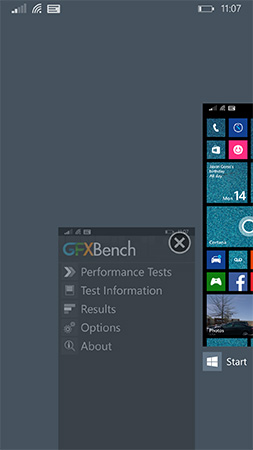
This is quite similar to what’s supported under iOS 7 (where it’s swipe up to quit). Unlike the iOS implementation however you can only swipe down one app at a time.
Revised System Specs
At the introduction of Windows Phone, Microsoft required that all OEMs have a physical camera button in addition to physical or capacitive buttons for back, home and search. It didn’t take long for Microsoft to remove the physical camera button requirement. With Windows Phone 8.1 the back/home/search buttons can be relocated on-screen, similar to what’s done on many Android handsets today. To accommodate those devices that inevitably ship without dedicated OS buttons, the screenshot button combination has changed from Power + Windows button to Power + Volume up.
The adjusted hardware requirements should make it easier for OEMs to take an existing Android hardware design and port it over to Windows Phone.
People Hub API, Disconnected Music+Videos Hub
When Windows Phone launched one of the major focal points was the People Hub, a single location for all of your contacts across all accounts/social networks. Previously you had to add accounts to Windows Phone in order for the People Hub to grab contacts from those accounts. With Windows Phone 8.1 Microsoft moves the People Hub from a push to a pull based service. If a 3rd party app supports it, all you need to do is login to the app itself and the People Hub will automatically pull in data from the app. Facebook is the best example of this as you no longer need to login to the Facebook app and then add your Facebook account separately to the People Hub. It’s a subtle change but one that echoes Microsoft’s new position on Windows Phone: rather than you conforming to Windows Phone, the OS should try and conform to you.
The other big hub change is the Music+Videos hub has been split up into two individual apps, each which can be updated independently of the OS.


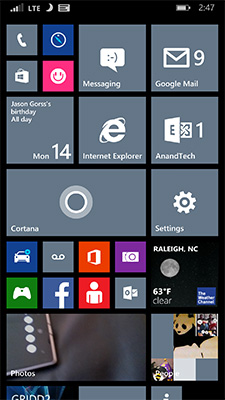
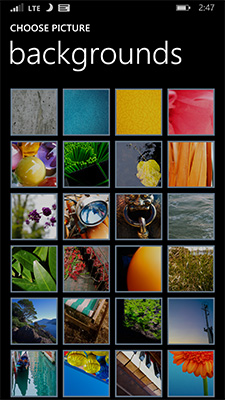

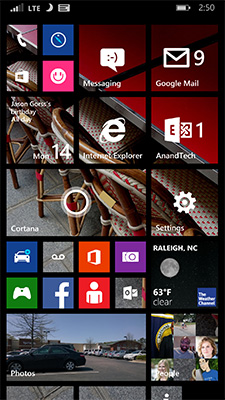
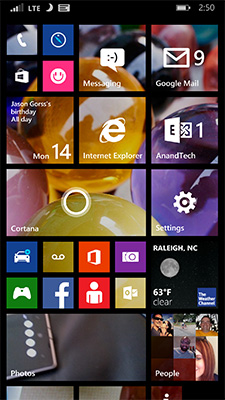
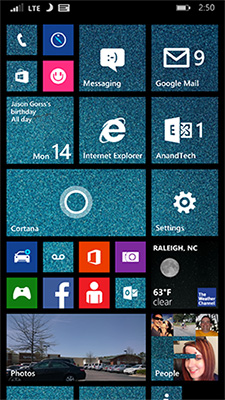
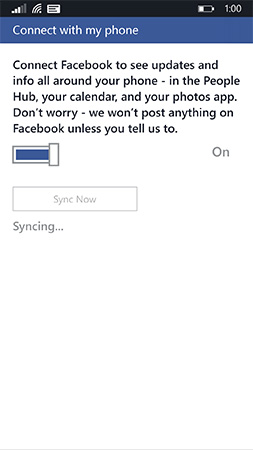








111 Comments
View All Comments
DanNeely - Tuesday, April 15, 2014 - link
In the second set of image tests the no and standard image compression images appear identical. Did MS really manage to squeeze 10% out with no visible impact at all; or did you load the same image twice?EnzoFX - Tuesday, April 15, 2014 - link
So they should be at the bleeding edge in hardware, while focusing on the entry-level? That sounds a bit counter productive to me, but what do I know.I do agree it's great as entry-level, I have a 521, and love it for the basics and little I use it for. I don't want to do anything too complex, if I did I would use a tablet, in which case free tethering on Tmo is a god send.
Penti - Tuesday, April 15, 2014 - link
Their tie in with Qualcomm worked for Microsoft, it's one of the reasons Nokia's mobile business collapsed when they switched as they had been paying and cooperating with other semi-suppliers and much of what they did and their supply network went up in smoke thanks to it. They have already fired 30 000 employees and closed their manufacturing in Europe except for a few holding out in Hungary were most have been sacked. Uprooted how they design and manufacture and most of their supply network. What has survived is manufacturing in India and China, were they mostly has done Series 30/40 type of devices, the sub €50 market.However it didn't look like this for Microsoft's market position for a long time, other SoC-suppliers were pretty prevalent and they did lag even on getting the latest Qualcomm-chips. As Qualcomm-chips come in both new high-end variants and low-end it does make sense to be supported early, regardless of when the mass release is done on the new chip. It also hindered stuff like other screen resolutions. Basically features Nokia's Symbian had in 2010 is what Nokia's WP-phones get now, and some of the limitations Symbian had like semi-fixed resolution got carried on and still applies in 2014. Great for Microsoft which get the only Windows Phone brand for nothing, but for the market as a whole? For NA? Well it's low end devices in Europe and Asia that sells and in the States they don't sell millions of units per year as they – the low-end – haven't caught on over there. High-end is mostly a marketing vehicle for Microsoft I would say. Most of the people that has been proponents early on knew nothing about it's limitations and so those people weren't good ambassadors. Most moved on as it's been about 4 years since Mix 2010. Others like Blackberry moved out of the spotlight but has been able to create whole new platforms within the same time that had most of the necessary features from the first few releases which were out some time ago. Until now, with 8.1 which hasn't made a final release yet, Windows Phone hasn't really been a choice in an enterprise as it's (mobile) management features were worse then BB10, Android and iOS, which all three also supported Exchange much better, had better third-party support for things like sharepoint and lync and so on. S/MIME mail weren't doable until 8.1 for example. They haven't drawn on their strength's that is the rest of the Microsoft family. While they have a mobile Office suit, it's features really isn't any better than third party packages for Android, BB10 or iOS by now and enterprise features or favorites like VBA Macros or really big spreadsheets are a now go. Thus it really doesn't offer any advantages. But now it is at least workable to a much larger extent.
Sabresiberian - Tuesday, April 15, 2014 - link
Thanks for the review of 8.1 and the Icon. I've been wanting an Anandtech treatment because I believe this site is the best at detailing mobile phone hardware and software. You and Brian are also very good at moving prejudices or preferences to the side, expressing opinions as opinions and differentiating them from the facts. Well done.Penti - Tuesday, April 15, 2014 - link
Sadly Universal Apps are overblown, WinRT-framework still has it's limitations and while WinRT has been updated to the same as desktops it still is a two-projects in one solution, and if you don't do an mobile UI, or don't do a Store-UI (desktop metro) then it won't run there. Only part of the code is shared, the .NET version still requires portable class libraries and it's still built as one mobile app and one startscreen app from that project. WinRT (runtime) is sadly a limited abstraction of Win32 rather than anything else and it's still much weaker than iOS SDK or Android NDK/SDK, or Blackberry 10 Native SDK, or Jolla's Sailfish SDK. The phone still runs Win32 programs and the others don't need an API for internal apps such as browsers and a totally different one for developers of third party apps. On Android there pretty much only is Bionic-driven Native apps and apps on the Android framework through Dalvik/ART. WP still has two native frameworks and runtimes underneath it's system. The only thing it does anything better then at a technical level is probably the Bada-LiMo hybrid that is Tizen which is a mix of Bada C++ API's and EFL, which no one can relate to. It kinda is like if Nokia would bring back Symbian C++ API's, which they did replace with Qt the last few years it were around. Microsoft have to settle for the low-end market here, even if they actually can do corporate email now.Duraz0rz - Tuesday, April 15, 2014 - link
"it still is a two-projects in one solution, and if you don't do an mobile UI, or don't do a Store-UI (desktop metro) then it won't run there."Is that a bad thing? There are many instance of iOS or Android apps being developed for the phone and not scaling well to the tablet. You have to make design decisions between the two, especially since the phone is designed to be used (for the most part) in portrait mode, while tablets are designed to be used in landscape.
"it's still much weaker than iOS SDK or Android NDK/SDK, or Blackberry 10 Native SDK, or Jolla's Sailfish SDK."
Why are the iOS or Android SDKs better than the WinRT SDK?
LarsBars - Tuesday, April 15, 2014 - link
Windows Phone lagged behind Android in getting LTE support, but the Lumia 900 launched 5 months before the iPhone 5, which was the first Apple phone to have LTE.UsernameAlreadyExists - Wednesday, April 16, 2014 - link
They even had a review of it. http://www.anandtech.com/show/5724/nokia-lumia-900... Of course, maybe Anand didn't read it :)wrkingclass_hero - Tuesday, April 15, 2014 - link
"It’s no coincidence that the two players that do have that feature also derive revenue from selling advertising against user data."Didn't Apple buy Admob? Admob doesn't collect user data?
MikhailT - Wednesday, April 16, 2014 - link
http://www.google.com/ads/admob/Google owns Admob, so no, Apple didn't buy Admob. Were you thinking of a different company?